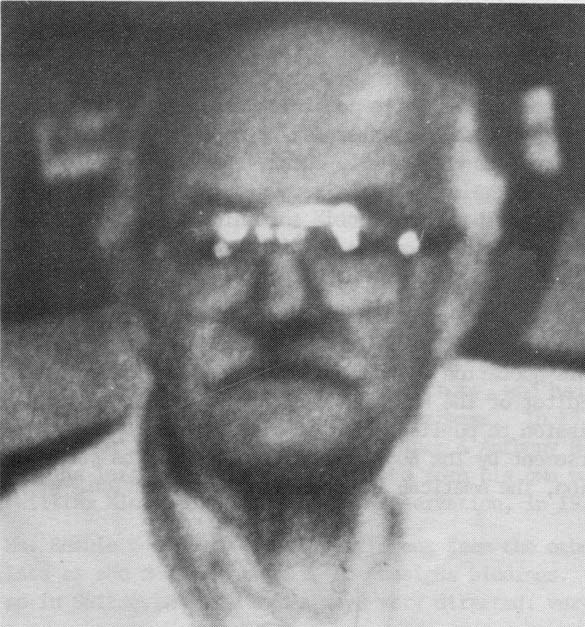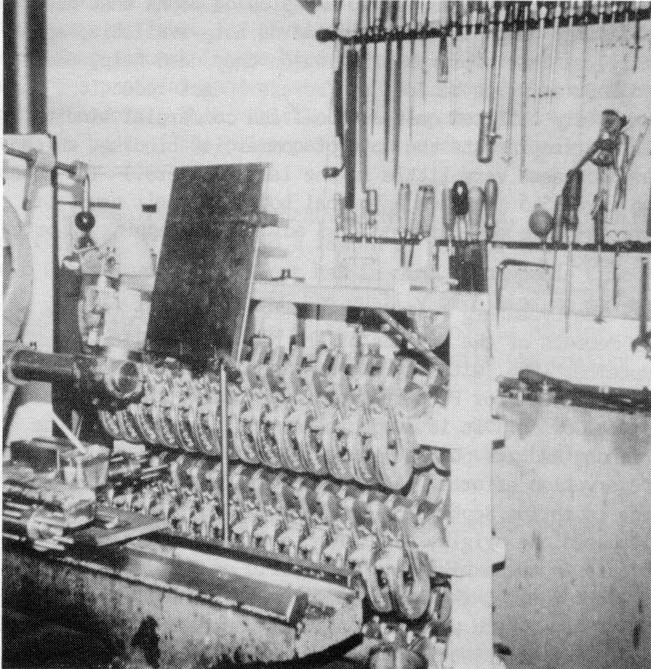

During a visit to Munich, West Germany, we made sure to meet the inventor and manufacturer of the Schärf-Fix skiving tool.
Munich bears the nickname "Weltstadt mit Herz," translated as "Cosmopolis with a heart." Our engineer, Ulrich von Schlieben, fits perfectly into this concept of putting-his-heart-into-his-work philosophy.
When he took us to his workshop we asked him what had made him apply his talents toward so unpretentious and seemingly unglamorous a tool as the Schärf-Fix. His answer is: concern for his fellow man and his needs. After all, our field of hand bookbinding is not a cornucopia yielding high profits. Even with an international scope, it is not a huge billion-dollar market. Financiers, inventors and investors do not come storming all over us with newer and better gadgets. They know we are few in numbers and poor in yield.
It turned Out that pretty much everything von Schlieben devised during his engineering career was tailor-made out of concern for working people and their problems.
As the son of artist parents, he had first meant to become an artist too. For reasons of his own however, he made up his mind to become an engineer, and he enrolled at the Polytechnikum in Munich.
The Bavarians with their love and talent for the good life keep a number of crafts alive that have disappeared elsewhere. The tastes and aromas of freshly baked breads and lovingly brewed beer thrive in a setting that only good craftsmen can provide. The lettering on store fronts and restaurants, the wrought iron store signs, the balconies and windowsills overflowing with multicolored geraniums, could not display their beauty if it were not for the skilled people who produce all this. It was always for these people that our engineer devised helpful tools. As it turned out, in his own field he became an artist after all.

The man: Ulrich von Schlieben
After the bombings of Munich during World War II, he lived and worked in the countryside. There he promptly invented and made tools for the barley farmers, the hop growers and the local brewers. When urban life started up again and von Schlieben returned to the city, he became friends with a bombed-out bookbinder. This man, who had to start from scratch again amidst the rubble, needed a skiving machine among some other things. This caused von Schlieben to think up the efficient little thing which we now call the "Schärf-Fix" (literally, "skive-quick"). The first model was made by hand entirely out of various and sundry parts and found objects. An ordinary razor blade was the life and soul of it. The other elements, the feeder and adjuster, were pure genius, and entirely von Schlieben's gift for making complicated problems plain and simple.
We were led into the "plant" where the current Schärf-Fixes are now made. One enters a courtyard off the busy street. And there indeed is a piece of Old Munich, spared by the bombs, and looking very much like a Spitzweg painting: high brick walls with nooks for the statues of patron saints, steep tile roofs with dormers, solid tin drainpipes and the obligatory window boxes with geraniums in bloom.
The workshop, consisting of two rooms, is small but clean and so well organized that the floor space allows for the flow of production while still leaving room for research and development.
A few drill presses and lathes are the main tools. The casting of the frames is farmed out. The incoming frames are lined up on a rack. From here on, the engineer himself takes over. Much is done by hand. Each process is carefully measured and calipered, following precise templates.

The shop: incoming frames lined up next to a lathe.
Ever since Mr. von Schlieben constructed his first Schärf-Fix he has kept pondering and working at its improvement. One of the most fascinating features in his shop is his record-keeping. In a multitude of very properly labeled drawers, the history of each screw and spring and template is chronicled. Its reason for being, its origin, its alloy, its measurements and its service record, together with an actual specimen, are all available at the pull of a drawer.
At the beginning of it all and behind it all is of course the personality of the engineer. He prefers not to work for a big company. To be his own man and master of his own world enables him to watch over the consistent quality and further wellbeing of his brainchildren. From their conception through their development to sending them out into the world, he sticks with his principle to do the best possible job on something useful.